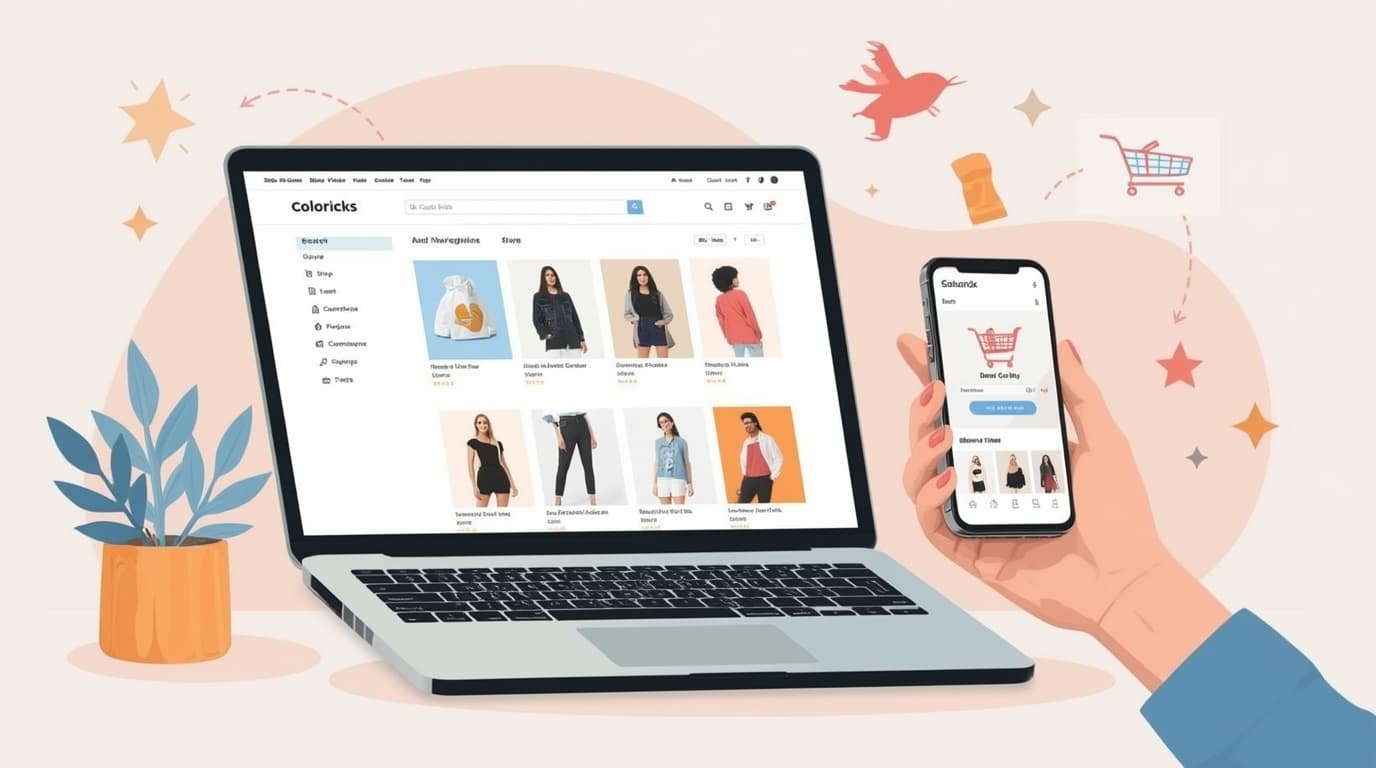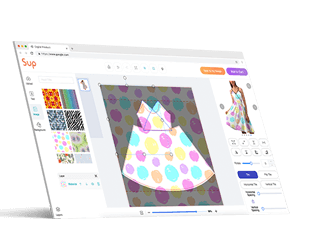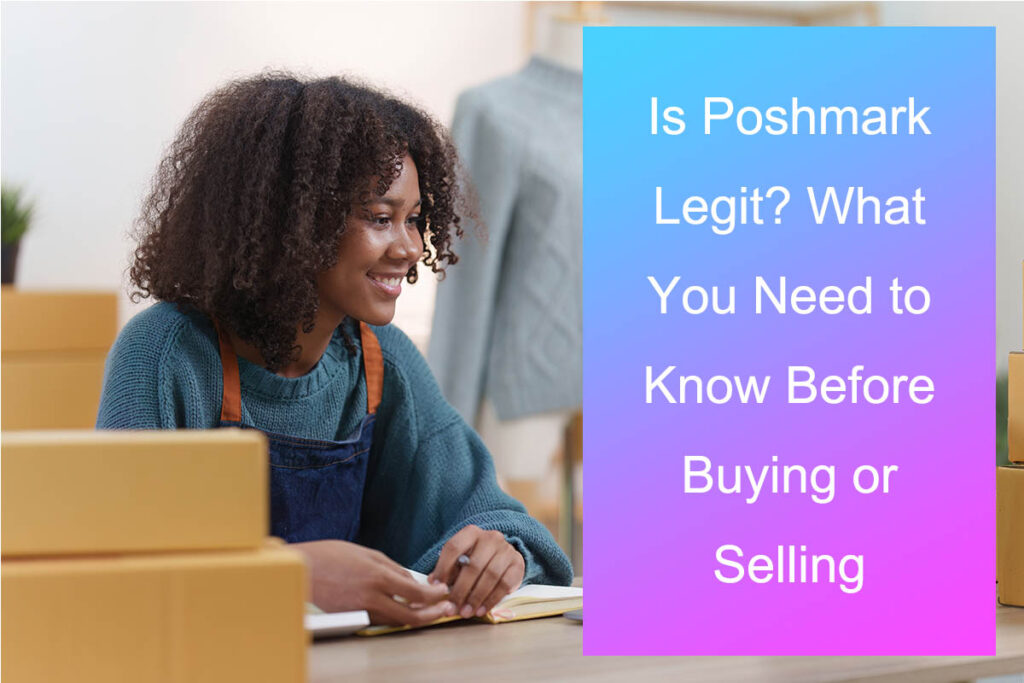Ecommerce Merchandising: 8 Strategies to Boost Your Online Store Sales

The final goal of every online store is simple: make sales. But selling online is not just about uploading products and waiting. If your store looks plain and unorganized, shoppers will leave without buying.
A good ecommerce store grabs attention, makes browsing easy, and guides customers toward the right products. That is where ecommerce merchandising comes in. It is the art of presenting, organizing, and promoting products in a way that turns visitors into buyers.
In this article, we will look at the difference between ecommerce merchandising and traditional merchandising, and then explore eight proven strategies that can help your Online-Shop stand out and drive more sales.
What is Ecommerce Merchandising?
Ecommerce merchandising is how you present, describe, organize, and promote your products in an online store. It works just like a physical shop. In a store, you arrange shelves, place signs, and guide shoppers to what they want. Online, you do the same thing but with photos, categories, and product pages.
For example, you show items with clear images, put them into simple categories, and write product descriptions that answer customer questions. The purpose is to help shoppers make choices more easily, improve their experience, and encourage more purchases.
The Difference Between Ecommerce Merchandising and Traditional Merchandising

Both ecommerce merchandising and traditional merchandising share the same goal: to present products in a way that influences customer decisions. The main difference lies in where the interaction happens. Traditional merchandising takes place in a physical store. Shoppers can touch, try, and ask store staff for help.
Ecommerce merchandising, on the other hand, happens online. Customers cannot hold a product or feel its quality through a screen. This means the seller must translate the sense of touch into a digital experience. Clear photos, videos, and detailed product descriptions replace physical contact. Smart layouts, simple navigation, and Kundenbewertungen guide the shopper in the same way that a helpful salesperson would in a store.
In short, traditional merchandising relies on the senses and in-person service, while ecommerce merchandising depends on visuals, words, and digital tools to build trust and lead customers to buy.
8 Strategies for Excellent Ecommerce Merchandising

Strong strategies make a big difference in how customers shop in your store. They help people find what they need, feel confident, and complete a purchase. Here are eight strategies for excellent ecommerce merchandising.
Build a Strong Brand Identity
A strong brand identity makes your store memorable and trustworthy. It includes your logo, colors, design style, and even the tone of your writing. Customers should know what to expect from you every time they visit. That means fast Lieferung, reliable customer support, and quality products.
You can also share your brand story. Tell customers how your business started, what progress you have made, and what values guide you. When people feel a personal connection, they are more likely to buy and come back again.
Most importantly, keep your brand identity consistent. Your logo, colors, and style should feel like they belong together. Do not change to something completely different on every page. For example, if your homepage uses clean white backgrounds and modern fonts, your product pages should not suddenly switch to heavy dark colors and cartoon fonts.
Related read: How to Establish a Successful eCommerce Brand
Use Compelling Visual Merchandising
Shoppers cannot touch or hold your products online. That is why visuals are so important. High-quality images and a clean design can catch the eye and keep people on your site longer.
Pay attention to your color scheme and page layout. A clear design makes browsing easier and draws attention to key products. You can use banners at the top of the page to highlight special offers. Pop-up promotions, if used carefully, can also guide shoppers toward items you want to feature.
Create a Seamless User Experience

For customers who are new to your store, shopping online can feel more complicated than walking into a physical shop. That is why your website should match natural browsing habits and offer clear, simple navigation. If people get confused, they will leave.
A good user experience starts with easy navigation. Include a search bar that actually works. Autocomplete and optimized search results help customers find what they want faster.
Speed also matters. Product pages should load quickly, and mobile optimization is a must. Most shoppers browse on their phones, so a slow or broken mobile site can kill sales.
The checkout process should also be smooth and painless. Keep the cart visible during the whole shopping journey so people do not lose track of what they are buying. After someone abandons their cart, send a reminder notification. This gentle nudge can often bring them back to complete the purchase.
Use User-Generated Content (UGC)
Customers trust what other people say more than what the brand promises. It is the reason why user-generated content is so strong. Products should appear more genuine and trustworthy through reviews, photos, and videos of actual buyers.
According to a 2024 survey, 40% of Gen Z consumers in the US will read a customer review before buying something. It demonstrates that younger customers seek peer ratings actively before making their purchase decisions.
UGC can be brought into your store in many ways. You can show reviews and photographs on the product pages to allow shoppers to see how this product looks in real life. You also have an opportunity to include social media shoutouts where customers talk about your products. It is also clever to get buyers to post a video of unboxing your brand with your hashtag.
Social media is gaining even greater significance. It is projected that the population of social media users in the United States will increase by 26 million users by 2024-2029. Approximately 28% of the customers are already relying on product reviews on social sites to make their purchasing decisions. This shows that UGC on social media is not a pleasant bonus. It is a major component of ecommerce merchandising.
Curate Collections
A well-organized store makes shopping easier. To do this, you need to understand your Markt, your customers’ needs, and their preferences. Then you can group products by attributes, function, or theme. This way, customers feel inspired while browsing and can make quicker decisions.
For example, you might create a collection of eco-friendly items, a “back-to-school” section, or a group of products made from the same material. Curated collections guide customers through your catalog instead of leaving them to search blindly.
Deliver Personalized Recommendations

Shoppers are more likely to buy when the products they see match their personal interests. Personalized recommendations use data such as browsing behavior, past purchases, or items left in the cart. This can show each customer products they are more likely to want.
In 2024, about 64% of customers said they preferred to buy from companies that offered personalized recommendations. In the same year, 90% of business leaders reported that personalization was a key factor in their success. These numbers show that personalization is not just a trend. It is a central strategy for ecommerce merchandising.
Examples of personalization include suggesting similar products on a product page, showing recently viewed items, or using retargeting ads to remind shoppers of what they looked at before. Done well, this makes customers feel understood and valued.
Use AI for smarter merchandising
Artificial intelligence is changing how ecommerce merchandising works. Instead of guessing what customers want, AI can analyze large amounts of data and give you clear insights. It studies browsing history, buying behavior, and even patterns in how groups of customers shop.
This makes it easier to segment your audience. Once you know who is who, you can personalize recommendations, create tailored collections, and run ads that speak directly to the right group of people.
A 2025 survey showed that more than 40% of marketers use AI mainly for audience targeting, while others rely on it for analytics and personalization. It is a practical tool that helps businesses show the right product to the right customer at the right time.
Plan Merchandising for Sales Seasons
Sales seasons can shape the entire year for an online store. Shoppers are ready to spend more during holidays, back-to-school weeks, or special cultural events. Planning ahead allows you to design collections, banners, and promotions that fit the moment.
Seasonal trends are also influenced by media and culture. Movies, music, or viral social content can suddenly increase demand for specific products. Keeping an eye on these signals helps you stay relevant and adjust your merchandising in real time.
Smart planning for seasonal peaks ensures that your store is ready with the right products, the right offers, and the right message when customer demand is at its highest.
Mehr lesen: Digitales Marketing für Startups: 7 Schlüsselstrategien zur Steigerung Ihres Wachstums
Ecommerce merchandising FAQs
1. Why Ecommerce Merchandising Matters?
The answer is simple. More and more people shop online every year, and competition is stronger than ever. If your store looks messy or hard to use, shoppers will not stay. Ecommerce merchandising helps you stand out by making your products easy to find, attractive to look at, and simple to buy. In short, it is how you turn clicks into sales.
2. How to get into ecommerce merchandising?
You do not need a big budget or a large team to start. Begin with the basics: organize your store so that customers can find what they want quickly. Use high-quality photos and clear descriptions. Pay attention to your store layout and test different product placements. Over time, you can add more advanced steps like personalization, customer reviews, and even AI tools to guide shoppers. The key is to keep improving and learning from how people interact with your store.
3. How can ecommerce merchandising strategies improve online shopping?
Good strategies make shopping easier and more enjoyable. For example, personalized recommendations help customers discover products they actually want. Curated collections can inspire shoppers and give them new ideas. User-generated content builds trust because people believe real customer reviews more than brand messages. Together, these strategies create a smooth experience that makes customers happy and more likely to return.
Abschließende Gedanken
Good ecommerce merchandising is the foundation of a smooth and enjoyable shopping experience. When products are presented clearly, organized thoughtfully, and supported with helpful content, customers feel confident and motivated to buy.
Good merchandising is not only about boosting sales in the short term, but it is also about building long-term trust and loyalty. Every online store, big or small, needs to think about how its merchandising choices shape the way customers see and interact with the brand.
If you are opening an online store, at Sup Dropshipping, we make running it easier and smarter. You can find top products from over 40 marketplaces, upload a picture to pick items, and buy in any quantity, from a single piece to a full container. We handle global shipping, order management, and provide flexible and reliable delivery options. This frees you to focus on growing your business. Kontaktiere uns today and start building a store that looks great, runs smoothly, and gives your customers a shopping experience they will love.
Über den Autor

Mai
May ist Bloggerin bei Sup Dropshipping mit über 5 Jahren Erfahrung im E-Commerce. Mays Leidenschaft für E-Commerce treibt sie dazu, über die neuesten Trends auf dem Laufenden zu bleiben und ihr Fachwissen in ihrem Blog mit Ihnen zu teilen. In ihrer Freizeit liest sie gerne einen Roman oder plaudert mit Freunden.





Schreibe einen Kommentar